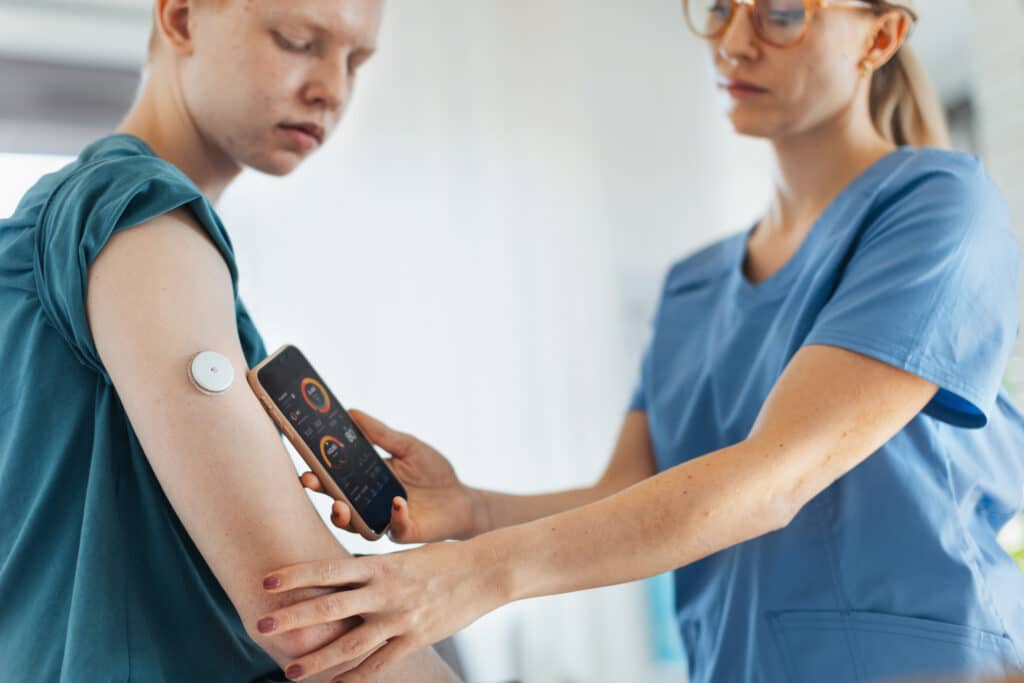Although the benefits of remote patient monitoring (RPM) for patients and providers have been well documented, many doctors’ offices have yet to adopt a program. The reasons for this often include poor past experiences with new technology: namely, cumbersome user interfaces, questionable data accuracy, drawn-out implementations, and surprise costs. If you’re a physician who feels hesitant for these same reasons, we can empathize. That’s why we’ve put together an easy-to-implement, doctor-run program that can help you adopt remote patient monitoring to increase patient health while increasing your revenue.
Read on to learn more about these specific challenges, what you can do to make sure an RPM program is successful, and where we can help.
Previous Experiences
It’s true that remote patient monitoring was initially more of a burden than a boon for several physicians. Early systems were often clunky, unintuitive, and disruptive to established workflows. Patients might struggle with using wearable devices for measuring physiologic data like blood pressure, which could then lead to inaccurate readings. Meanwhile, doctors’ offices could be overwhelmed with the sheer volume of patient health data to review that these devices would send to them.
The solution: RPM devices have evolved to be easier to wear and maintain. Our triage and RPM nurses can also be instrumental in walking patients through any troubleshooting they may need for applying monitoring devices and verifying that their readings are accurate. Those same nurses can review the heavy input of data that devices generate, use it to identify changes in patient health before symptoms become severe, and send patients to a doctor only if a physician is needed.
Delays Due to Implementation
For many physicians, hearing the word “implementation” equates to a longer day at the office. They know that with new technology, there’s invariably a learning curve for them and their staff, even before they can verify that its data is integrating across platforms and logging correctly in patient files. Plus, the more time spent reviewing new technology means less time directly helping patients, which has the potential to delay care.
In high-stress environments where patient well-being is paramount, implementing remote patient monitoring may simply represent too much of a disruption in the minds of some doctors.
The solution: TriageLogic works with established RPM providers that have devices that can sync with your in-house software. Doctors who partner with us also get access to our RPM nurses who are already familiar with these devices to oversee their data management.
Financial Burdens
Understanding the financial impact of remote patient monitoring is crucial. Doctors must consider not only the implementation costs for their practice, but also an RPM service’s return on investment, as well as the out-of-pocket expenses for their patients. Above all else, doctors should be able to see a tangible increase in practice revenue that does not compromise care quality.
The solution: Learn the facts about CMS reimbursements for RPM. Successful RPM programs can more than pay for themselves by providing doctors with a valuable revenue stream. Contact us to learn more about reimbursements and how TriageLogic can assist you in ensuring proper documentation.
Demonstrating Benefits to Patients
Many patients may be overwhelmed by the idea of having to wear medical devices to monitor their health. Either they find them intrusive, or they worry that they won’t maintain those devices properly.
The solution: Reassure patients about this technology by recognizing and promoting their benefits. RPM devices can offer greater clarity than traditional medical observation, because they provide timely data to anticipate negative changes in health. In many cases, these devices also remove the need for in-person or virtual visits, as doctors are already made aware of patients’ health conditions outside of normal office visits. Finally, patients no longer have to worry about documenting and recounting their own health experiences, as RPM will have recorded relevant vital signs for clinical review.
Ultimately, remote patient monitoring is only successful when physicians have access to a well-designed program. That’s why the one we’ve developed here at TriageLogic was done with heavy input from healthcare professionals to account for these concerns and offer a better solution.
Our Approach to Adopt Remote Patient Monitoring
1. Ease of Integration. Our RPM program is designed to be plug and play, minimizing disruption to your practice. It’s intuitive, ensuring a smooth transition for you and your staff.
2. Trial Periods. We pilot the program with a select group of patients, allowing you to observe its effectiveness before committing fully.
3. Financial Transparency. We clearly summarize costs, reimbursements, and projected revenue increases. Our program is structured to financially benefit your practice and your patients.
A Pathway to Better Care
RPM is not just a technological advancement; it’s a pathway to better care management. By understanding and addressing the reasons that professionals have hesitated to adopt this service, we’ve developed an RPM program that enhances physician care and practice efficiency.
Let’s Create Your Personalized RPM Program
You can adopt remote patient monitoring and reap the benefits. Take the first step towards enhanced patient care by partnering with TriageLogic. When you’re ready, contact us to schedule a no-obligation discussion to explore the benefits of our program and how it can meet your needs.
Let’s redefine patient care by improving health outcomes together.
About TriageLogic
TriageLogic is a URAC-accredited, physician-led provider of top-quality nurse telehealth technology, remote patient monitoring, and medical call center solutions. Founded in 2007, the TriageLogic Group now serves more than 22,000 physicians and covers over 42 million lives nationwide.





